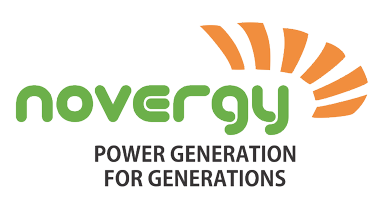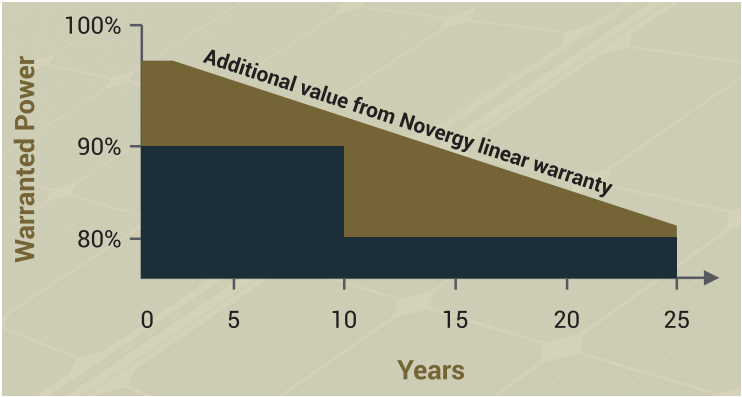
|
Parameter |
Consideration points |
| Technology selection | One of the first points in choosing the right solar panel is to make a selection from the range of solar photovoltaic technologies.
There are 2 predominant technology categories today for solar photovoltaic panels. (a) Crystalline silicon. This has 2 further sub-categories i.e. Mono crystalline and Poly crystalline (Multi crystalline) (b) Thin film. There are various types of thin film technologies such as Amorphous Silicon, CIGS (Copper Indium Galium Selenide) , CdTe (Cadmium Telluride), (c) Gallium arsenide based solar cells are also one of the photovoltaic technologies, but typically used for space or very specific applications. Based on the trends in the last few years, the crystalline silicon technology is the most popular and major technology. Both types of crystalline technologies have their own set of customers. Thin film technologies have a very small market share which is further dwindling due to the cost-benefits of crystalline technologies. Hence choosing from either of the crystalline silicon technologies is the best choice. Monocrystalline technology has a higher efficiency and slightly lower degradation, but is costlier as compared to polycrystalline silicon technology. |
| Efficiency of module
|
This is one of the most important criterion while selecting solar panels.
The higher the efficiency of a solar panel, the better is its capability to convert incoming solar radiation into electrical energy. Hence, it is strongly suggested to choose solar panels with solar panel efficiency of 17%or higher. This serves multiple benefits. First of all it allows better solar energy harvest. Further it also ensures that the solar panel will deliver better results over a longer period of time. It is important to bear in mind the difference between the solar panel and solar cell efficiency. The solar cell efficiency is higher as compared to solar panel efficiency by about 2 to 3%. So the selection of the solar panel should be based on the efficiency of the solar panel. |
| Temperature coefficient
|
The temperature coefficient is basically the relationship of the solar panel power output to the operating temperature of the solar module. Since the solar panels have silicon based cells, hence this relationship is negative. This means that as the temperature rises the power output of the solar panel decreases. The coefficient is described in negative value as a % change per degrees.
Hence, solar panels with a lower temperature coefficient are always a better choice as compared to panels with a higher coefficient. Typically, any solar module with a power temperature coefficient of -0.40 / Deg. C or lesser is always preferable, as it ensures less power drop in a higher temperature environment. This factor is even more important for tropical / high temperature conditions where the solar panels generally operate at high temperatures continuously. |
| Annual Degradation | Due to their physical and chemical properties, solar panels have a degradation when installed in field due to number of factors.
Most solar panels being sold in the market have an assurance on paper of not degrading more than 20%in a period of 25 years. The typical degradation pattern of crystalline silicon based solar panels is about 2% in first year and then 0.67% per annum afterwards. However unfortunately this is one of the biggest problems facing the industry with many solar panels having very high degradations. In fact, many solar panels have exhibited degradation in field of even as high as 30 to 50% in the first 3 to 5 years!!! It is always suggested to choose an older and more reliable solar module manufacturer because it comes with the added assurance of the product being more reliable and having proven themselves in field in terms of degradation. |
| Warranty | The common practice is to provide a 25 years power output warranty. This warranty is provided in 2 ways :
A slab wise warranty for first 10 years assuring 90% power output and next 15 years assuring 80% power ouput (of the original rated capacity of the solar panel). A linear warranty for the whole period assuring lower than 0.7% degradation per annum with a minimum of 80% assured power output in 25 years of the original rated solar panel capacity. A linear warranty provides the added benefit of covering any sudden degradation in between. Eg. Suppose the solar panels face a degradation of nearly 8% in first year. As per the earlier policy of slab wise warranty, this panel will not be eligible for warranty replacement. But a solar panel with linear warranty will definitely be eligible for warranty replacement. Below graph gives an overview of the difference in added protection by a linear warranty :-
|
| Certification | There are various reputed International bodies which ensure a type test approval for the solar panels. It is important to go for solar panels which have such certifications preferably from reputed bodies like TUV Rheinland, UL, ETL, Intertek, TUV Nord, BV, etc.
It is not advisable to go for solar panels without certification as the product may not be meeting the requirements to pass such stringent tests. |
| Manufacturer tenure | Preferable to choose a manufacturer who has been around for a while.
Because the product being purchased is required to have a very long term assurance, hence it is not suggested to purchase solar panels from newer players or players which have a very short track record. It is ideal to choose the solar panels from manufacturers having a track record of selling solar panels with a minimum of 10 years or more. This will ensure peace of mind that in case there is a problem with the product or there is a warranty claim, then you can go to the manufacturer for a replacement. |
| Glass type | With the recent trends and technological developments, it is always advisable to go for solar panels with Anti-reflective coating (called in short as ARC) on the glass.
This helps in better solar energy harvest during morning and evening hours as well as foggy conditions. Further it also helps to some extent in reducing dust deposition on the solar panels. |
| Other parameters | Some other minor parameters to bear in mind could be checking for the cell busbar configuration or the mechanical strength of the solar panels.
Due to technological changes, it is preferable to go with solar panels having 4 busbar or better cells. |
| Price | Price is unfortunately given more importance while purchasing solar panels than is required.
One must bear in mind that solar panels have to last for more than 25 years. In fact they have to face the worst of weather conditions such as intense sunlight, heat, UV radiation, IR Radiation, Winds, rains, fog, etc. |


